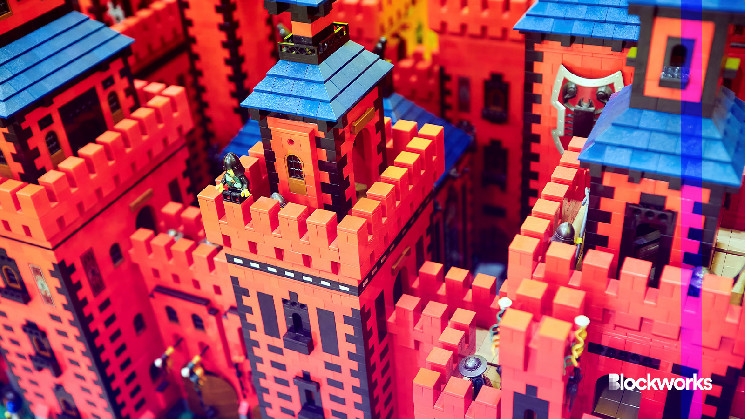The utopian vision of thousands of blockchains happily running side by side and interacting with each other in an interconnected multiverse is becoming less and less likely, it seems.
And while the summary statement seems to replace the appchain story of entities like Polkadot and Cosmos, Zee Prime Capital partner Fiskantes says, “It’s still the same at the end of the day.”
“The architecture, the structure is pretty much the same. It’s just, now we call it rollups, and it’s on Ethereum.”
Whether it’s appchains or rollups, Fiskantes says he doesn’t see a future where thousands of chains will crowd the DeFi landscape. Even though it’s trivially easy to set up a rollup or app chain for any purpose, the friction associated with switching between the two and the infrastructure costs will be too high to justify, he says.
But “the jury is still out” on how it will all resolve, he admits.
Read more: Would Uniswap be better off with its own app chain?
On the Lightspeed podcast (Spotify/Apple), Fiskante proposes a more likely scenario that seems to be playing out among the industry’s leading companies right now. “If you own the front end… and then the blockchain infrastructure, you can of course use all kinds of middleware.”
This “moat building” approach limits composibility, he admits, but many projects don’t seem to worry about the trade-off. In fact, it could ultimately be beneficial to them, he says.
Unlimited configurability creates a “nearly unlimited attack surface,” he said, adding that the benefits are not as great as the potential risks it poses. So many things can go wrong with components built without permission on top of an open-ended project, he says.
Fiskante suggests that a more likely scenario is one in which many ‘silo’ ecosystems offer competing versions of similar services.
Expanding boundaries
During the DeFi summer of 2020, everyone welcomed the concept of several interconnected DeFi blocks functioning symbiotically together as a sort of “Lego castle.” Now, he says, most remaining projects compete with each other by integrating vertically or horizontally, building components that already exist elsewhere for their own ecosystems.
“A good example of this is Frax,” he says, “where they try to make LSDs, stablecoins and everything themselves.” Companies like Curve and Aave are also creating user moats and building their own stablecoins to compete with Maker, he adds.
“Everyone is trying to do everything right now because they realize they’re not really building Lego pieces,” he says. “They are building their own little empires and want to expand their borders as quickly as possible before they become saturated.”
The one possible exception to the trend is Solana’s integrated ecosystem, Fiskante says. But even there, he notes, “they’re going to have to work very hard to maintain the performance of the chain when so many different things are built on it that will compete for block space.”
“Of course,” he says, “they have parallelization and other tools to deal with that.” But even with the techno-wizardry of parallelization, a phenomenon known as the Jevons paradox could still hold things back, he suggests.
“The more you enable new activity by scaling up the infrastructure, the activity will scale with it and always take up the free space you have freed up.”

